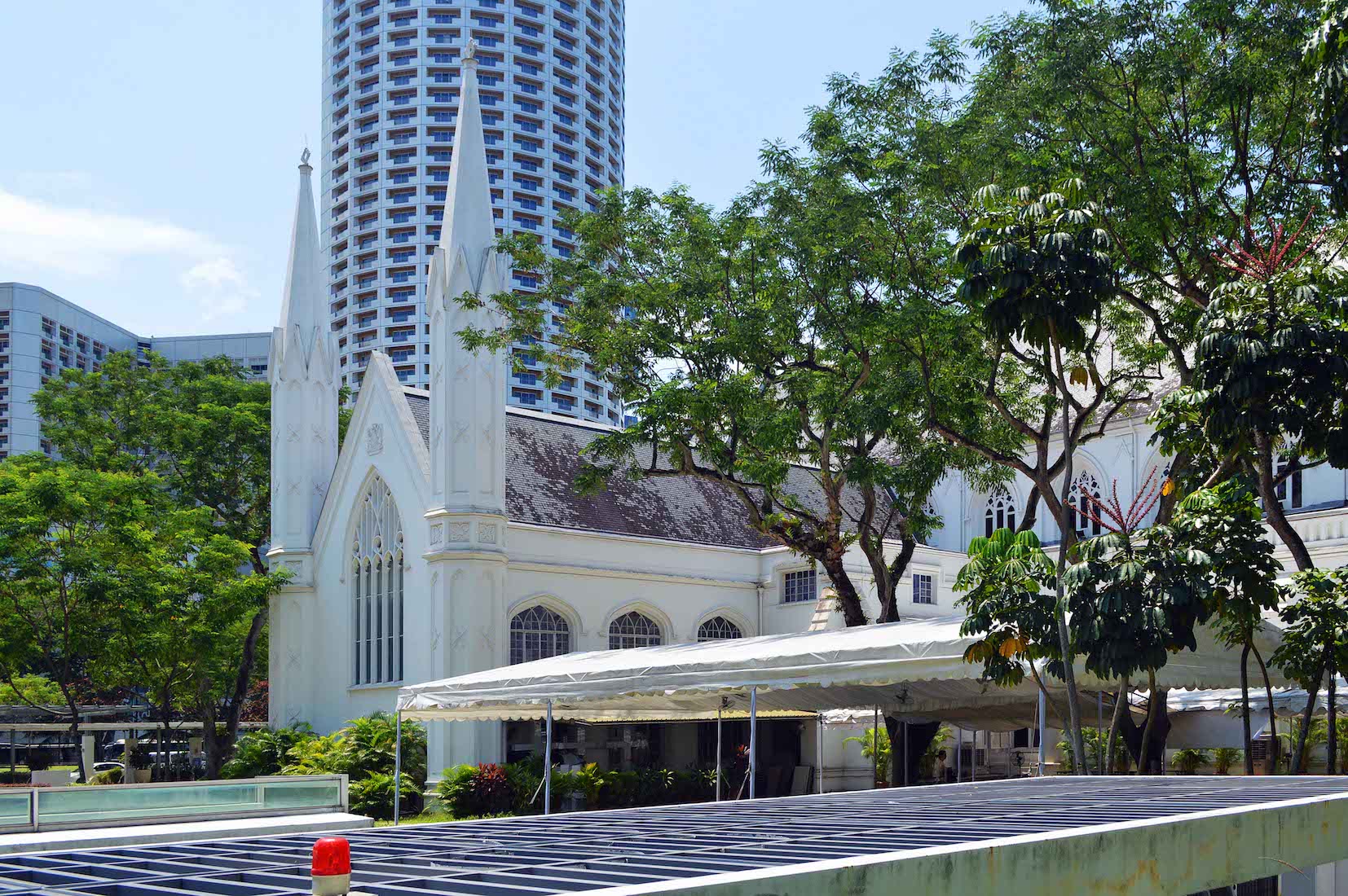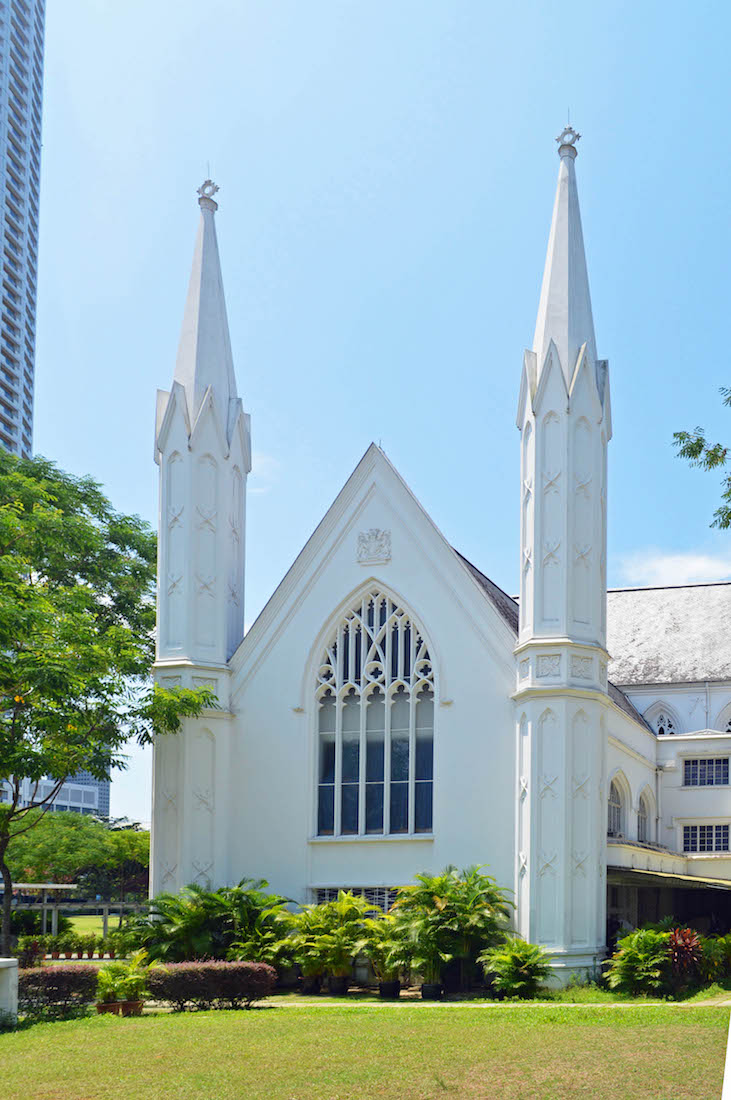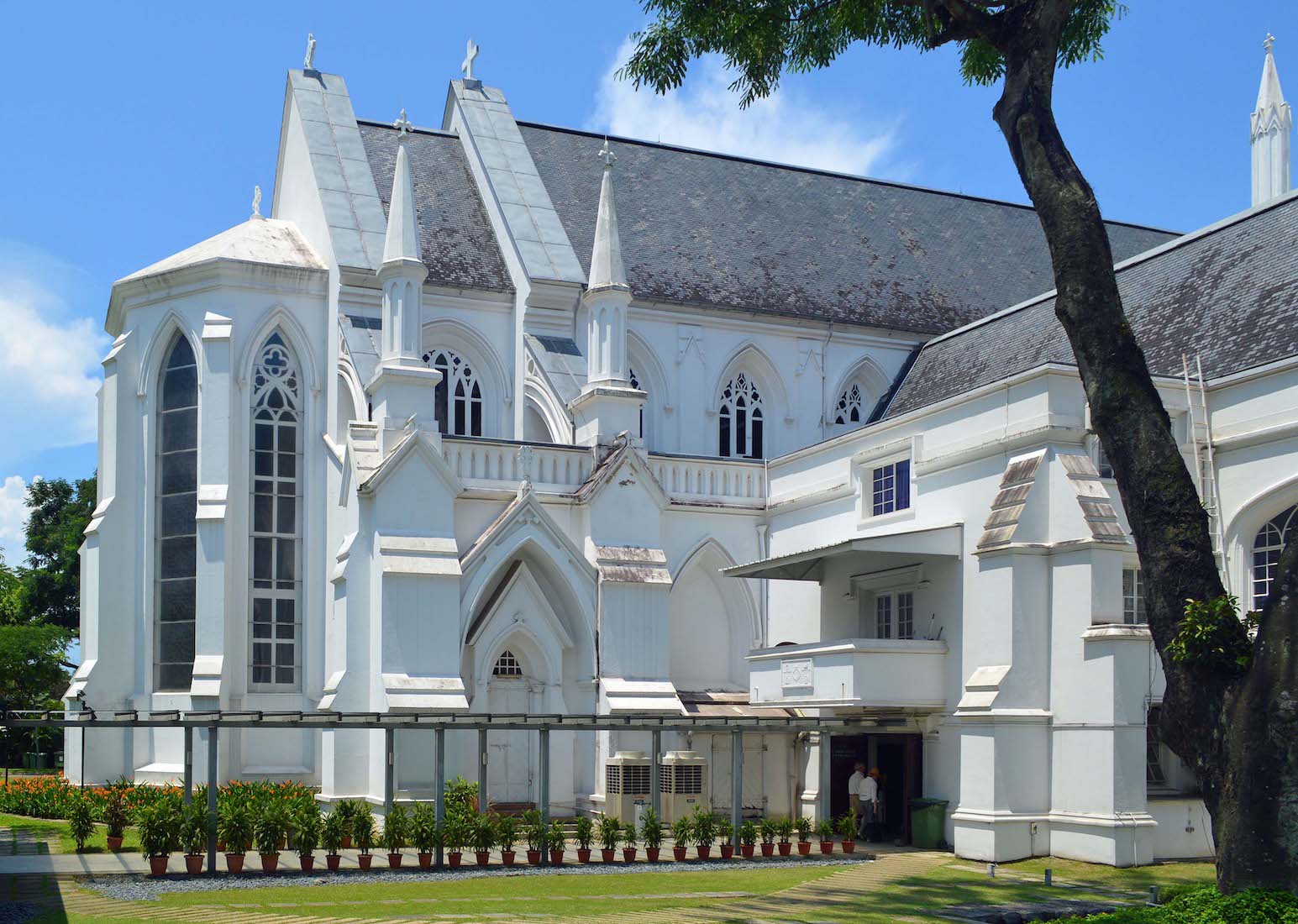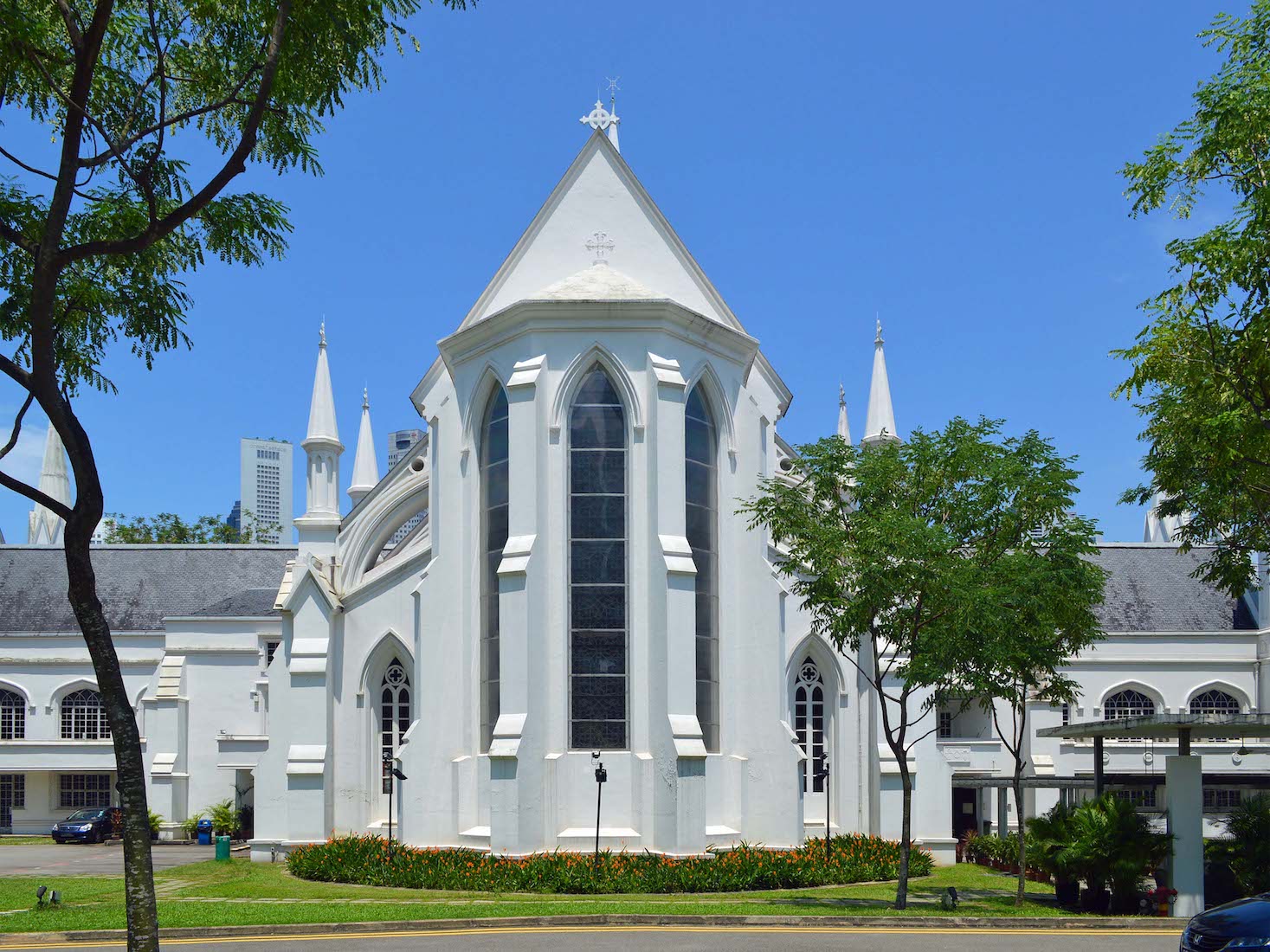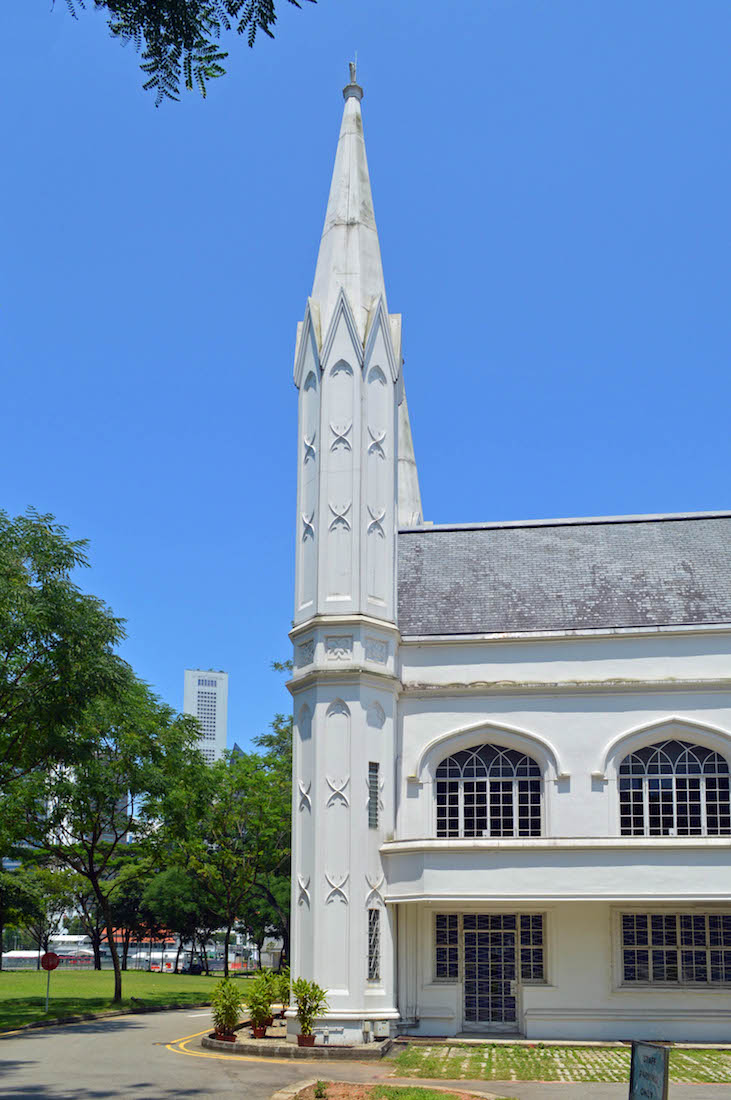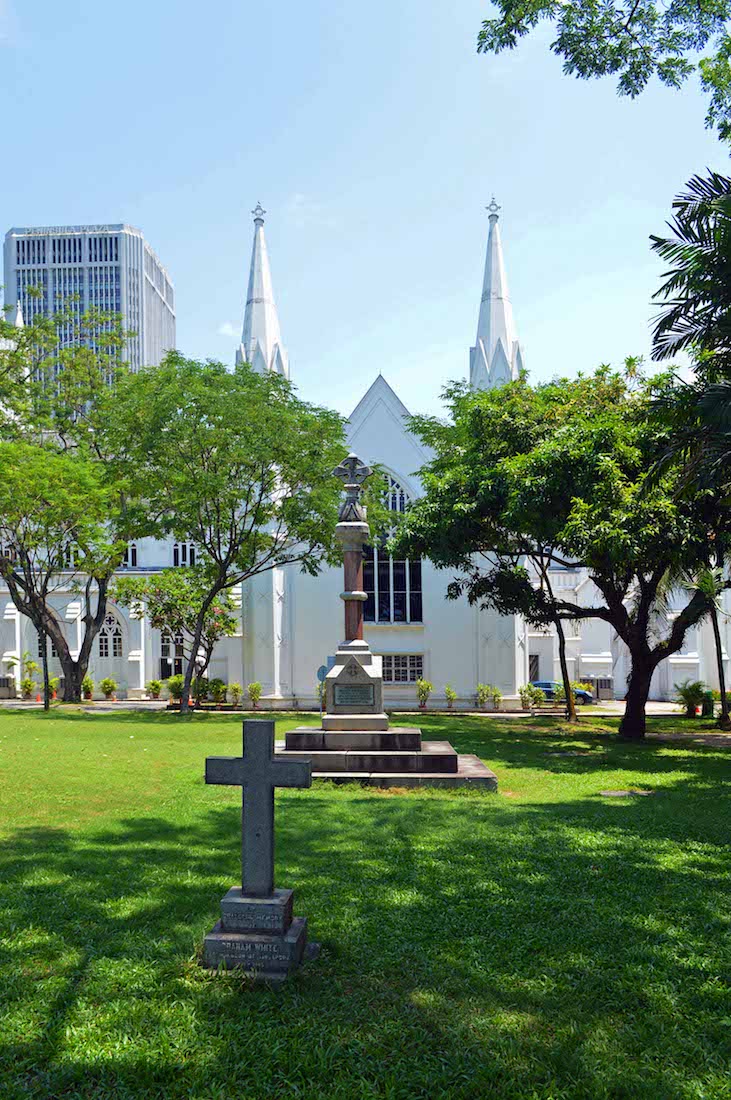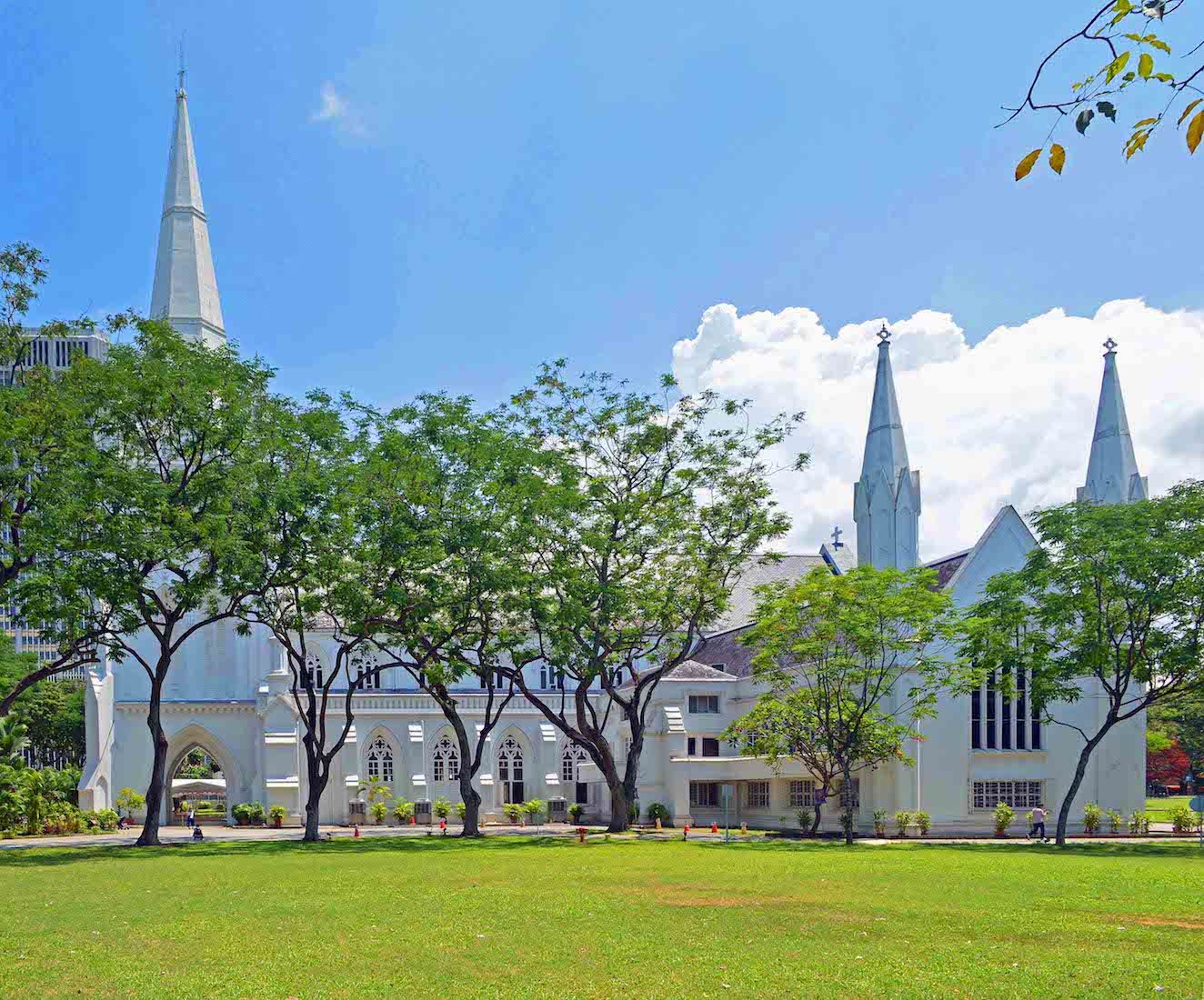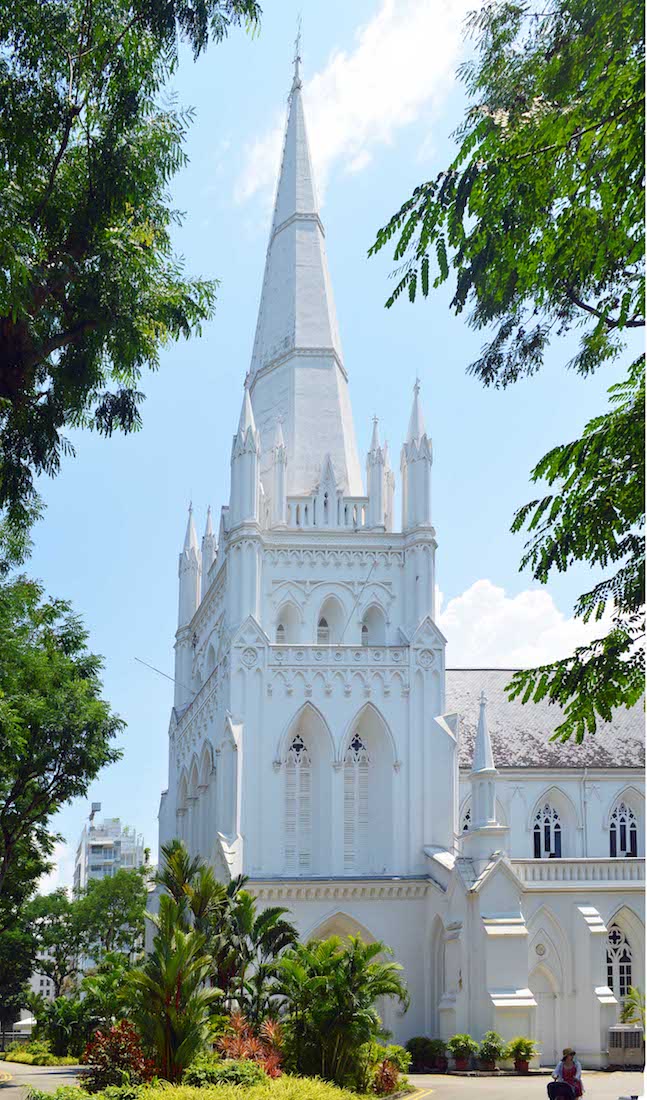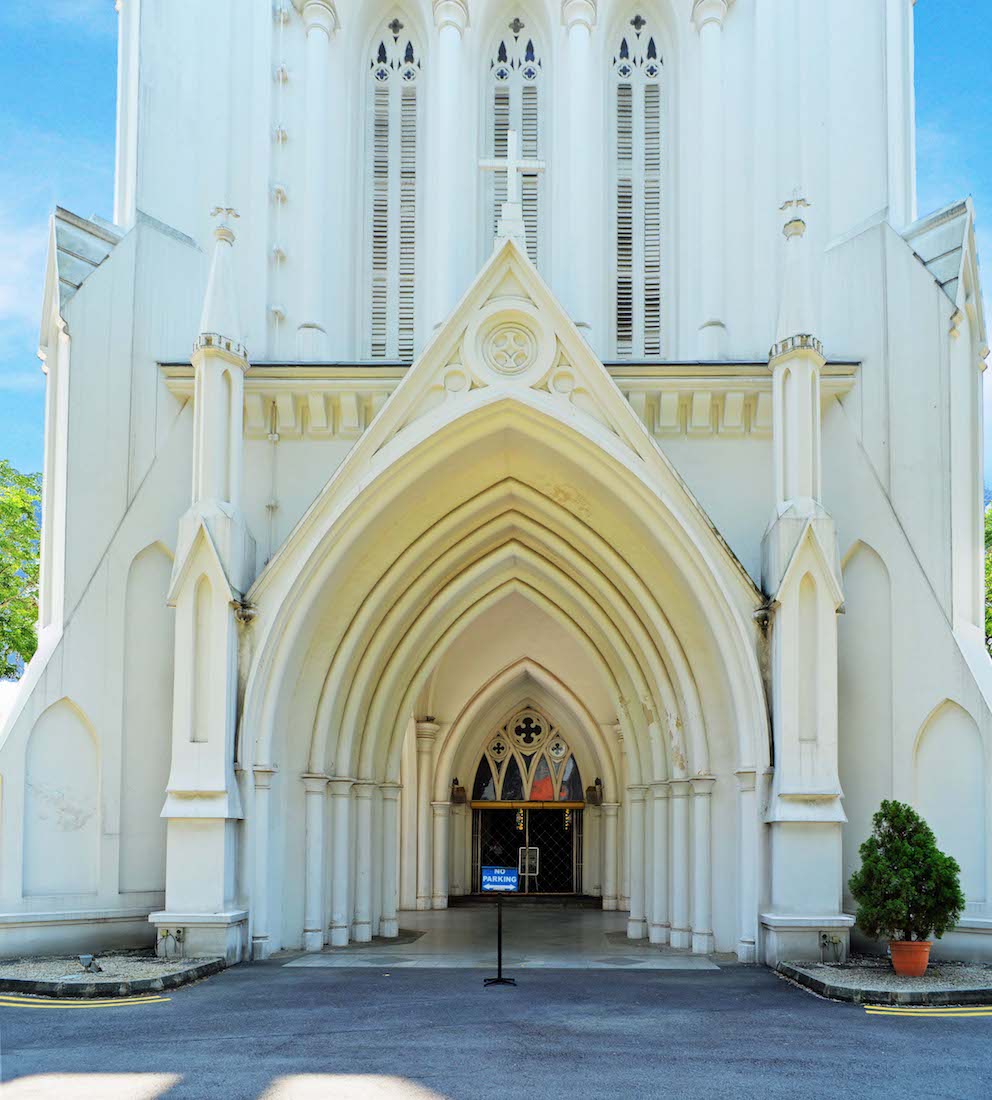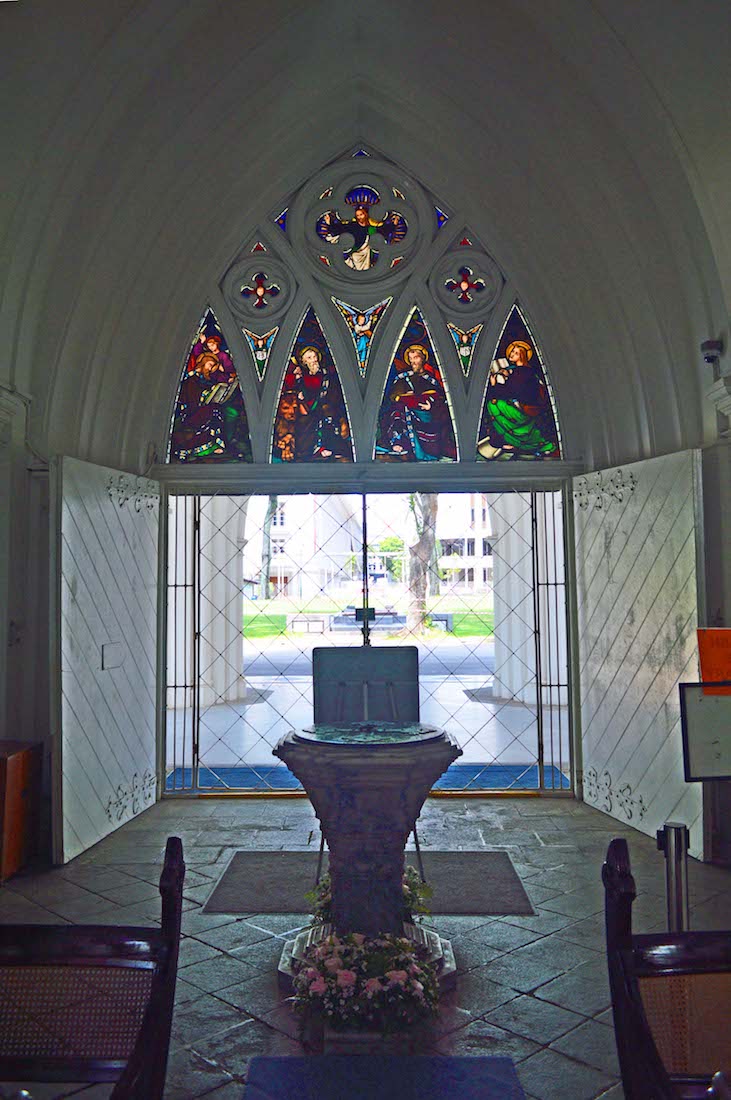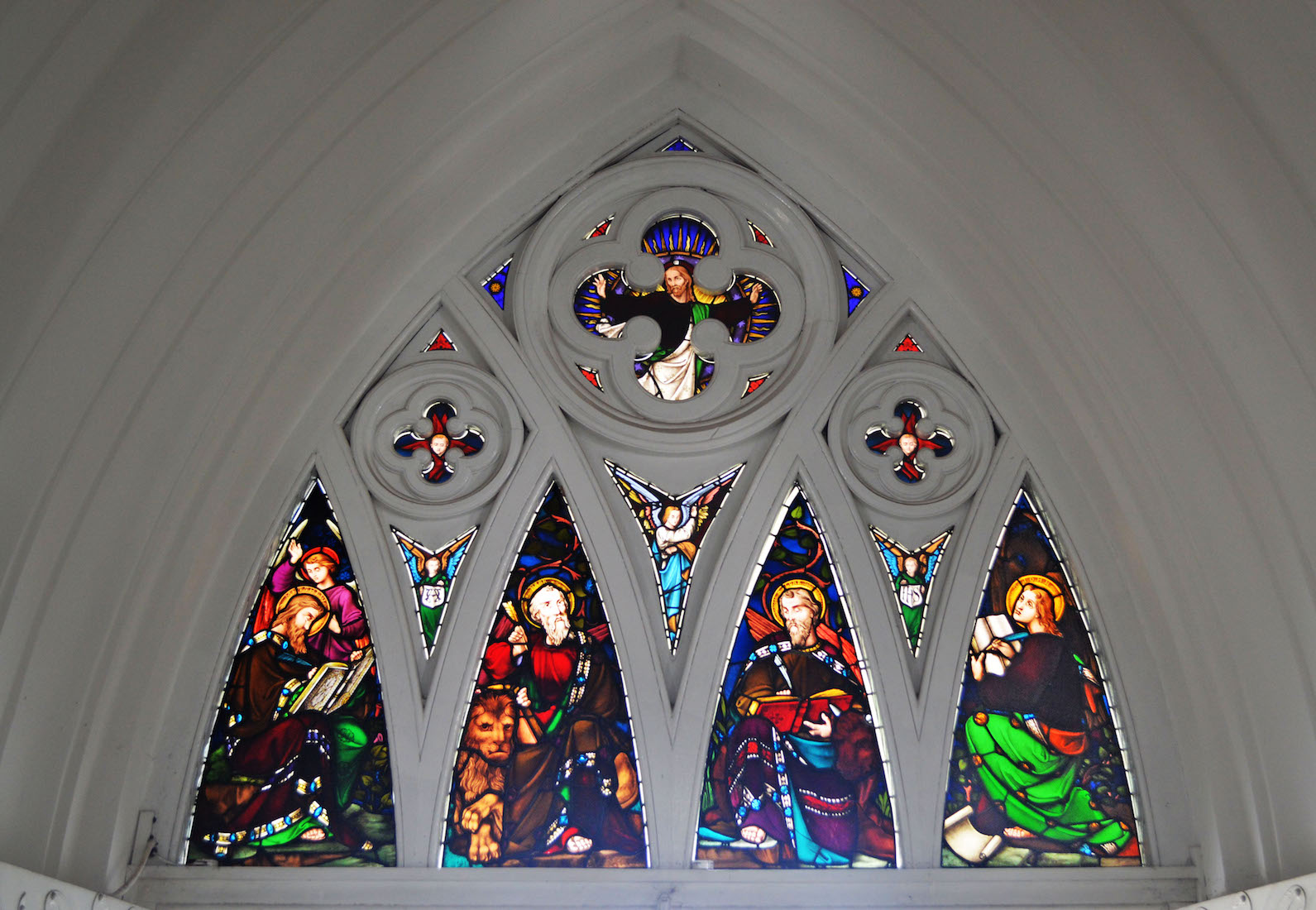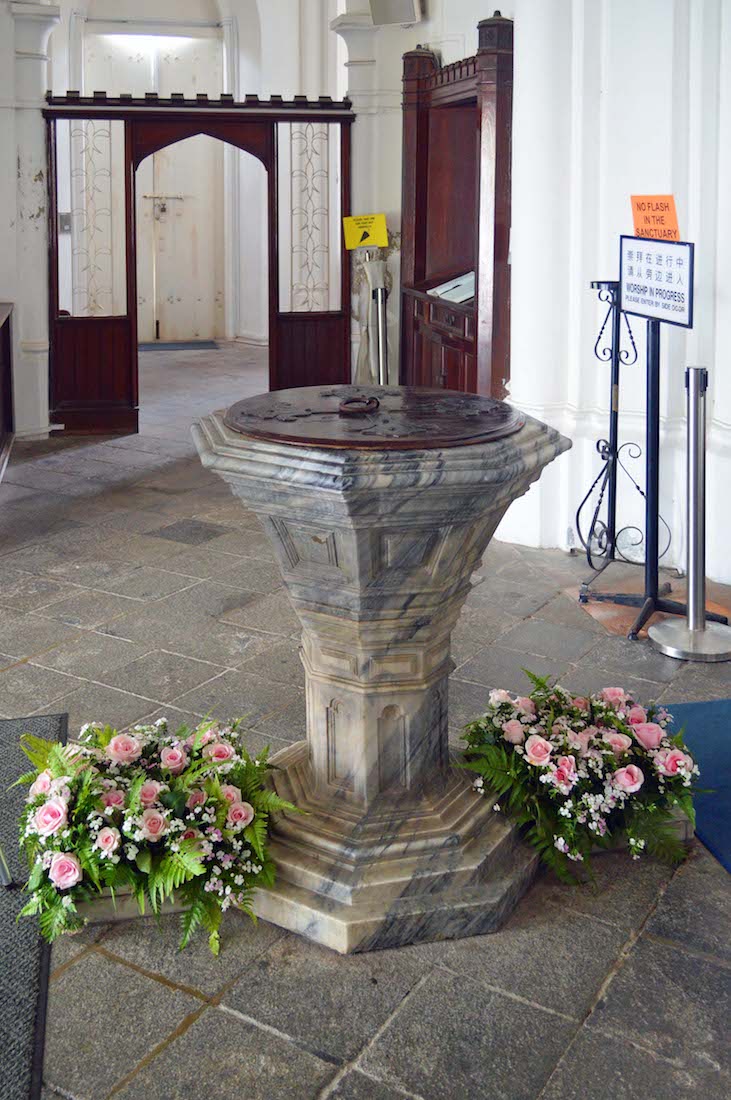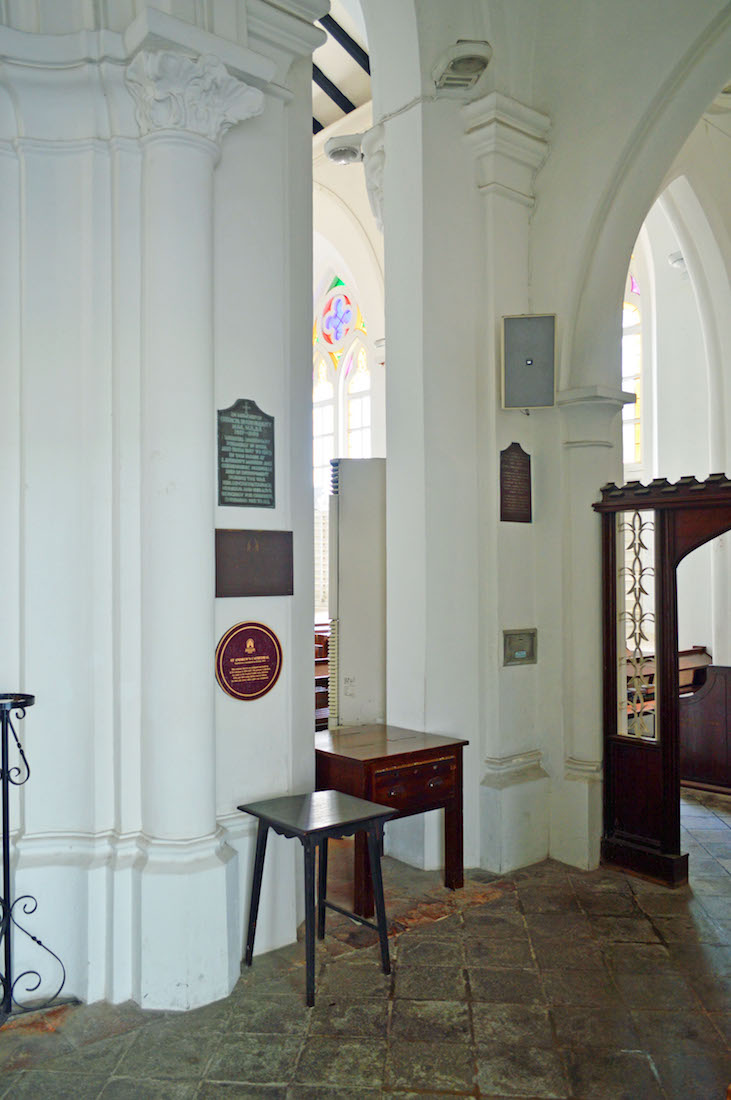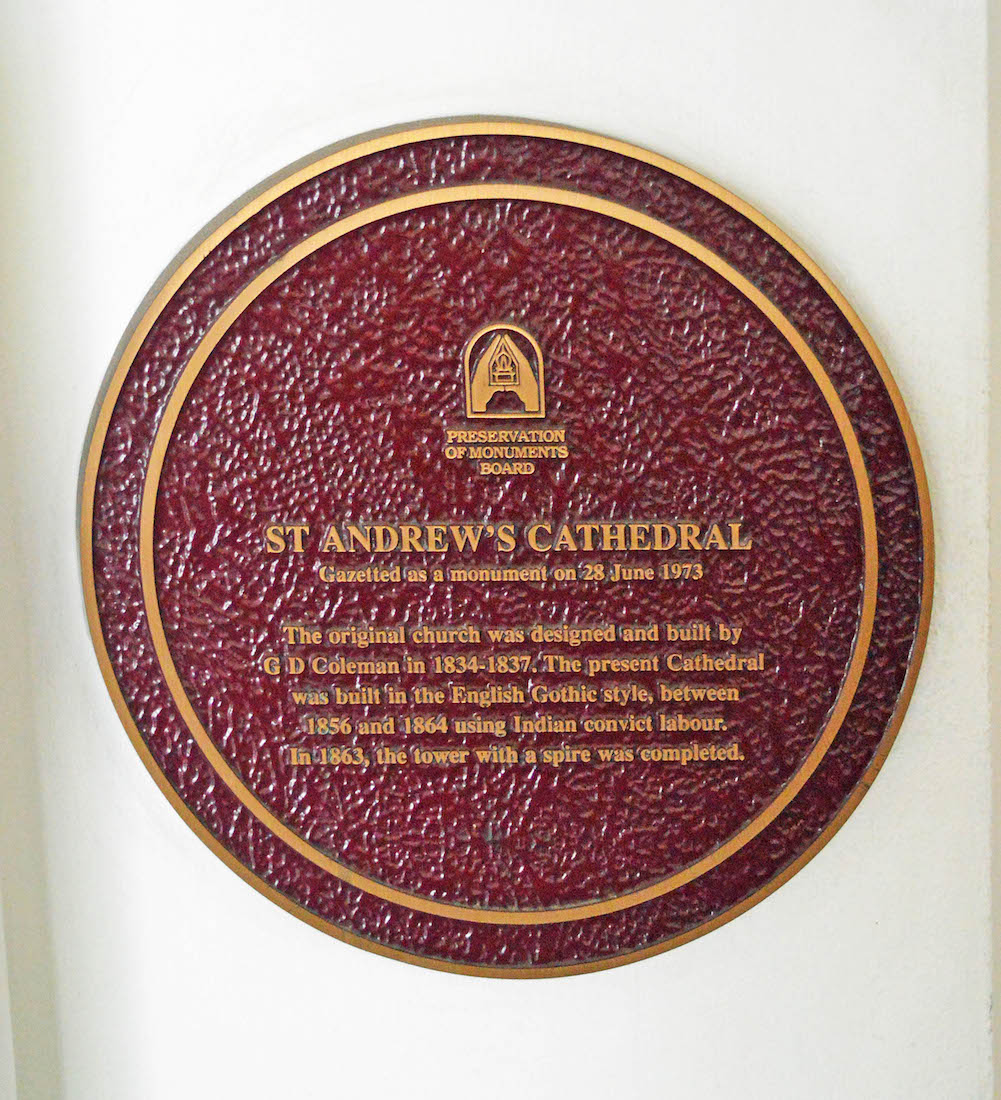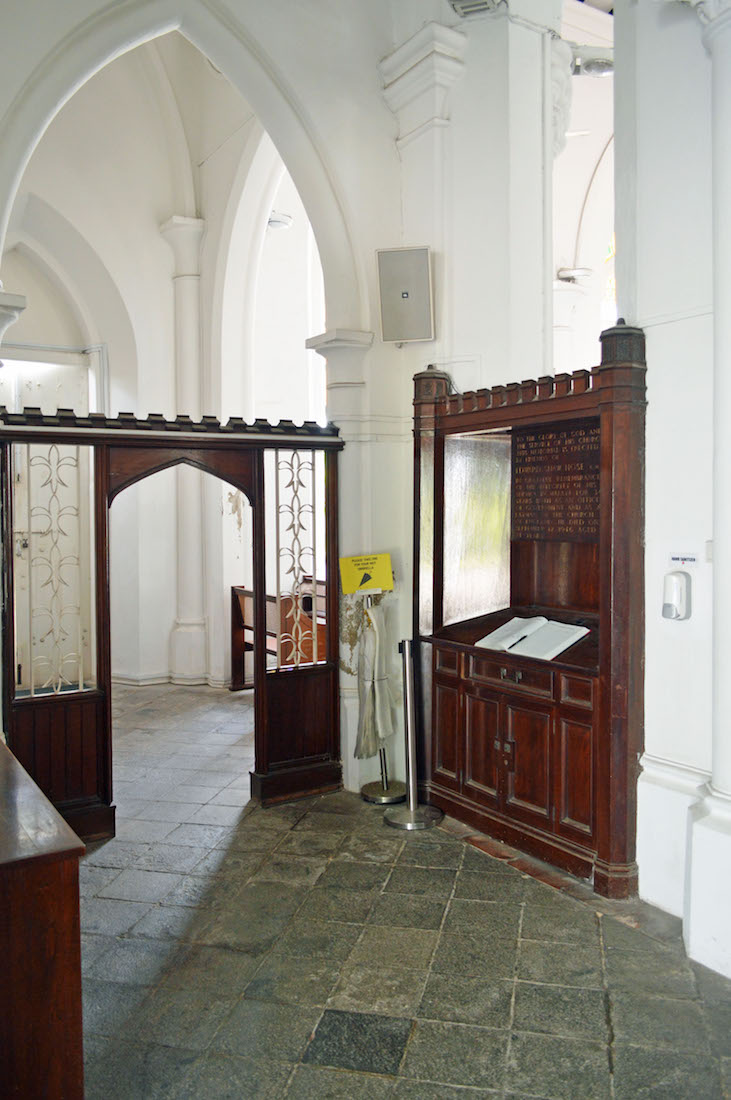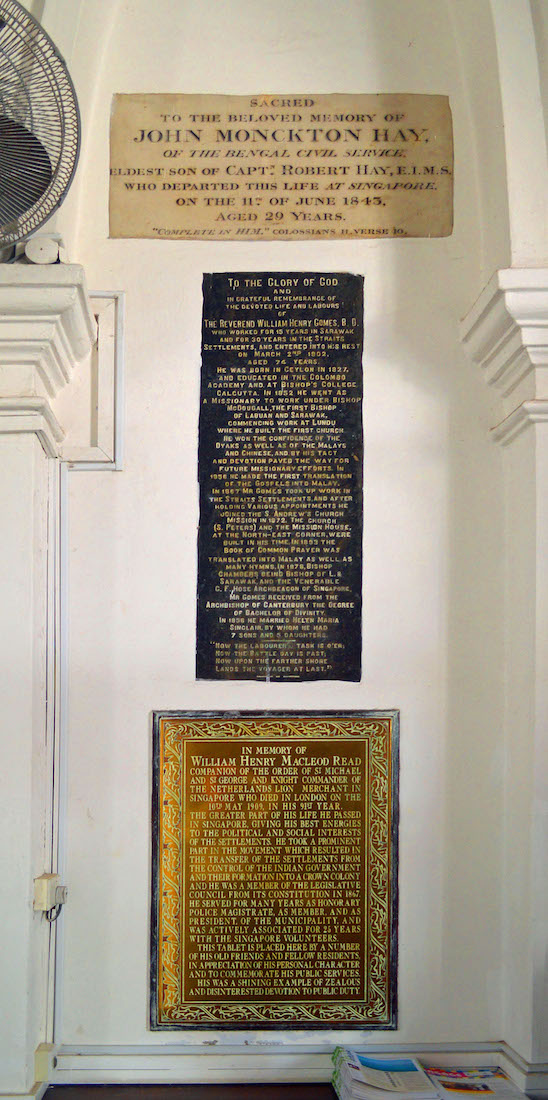
St Andrew’s Cathedral is delightfully set in a whole city block in the centre of Singapore. The Cathedral is oriented in line with the city grid so that the main tower actually faces in a south south west direction. As we have indicated, we shall use standard liturgical directions with the sanctuary facing East and the main tower West (capital letters). PLAN
2. NORTH WEST VIEW
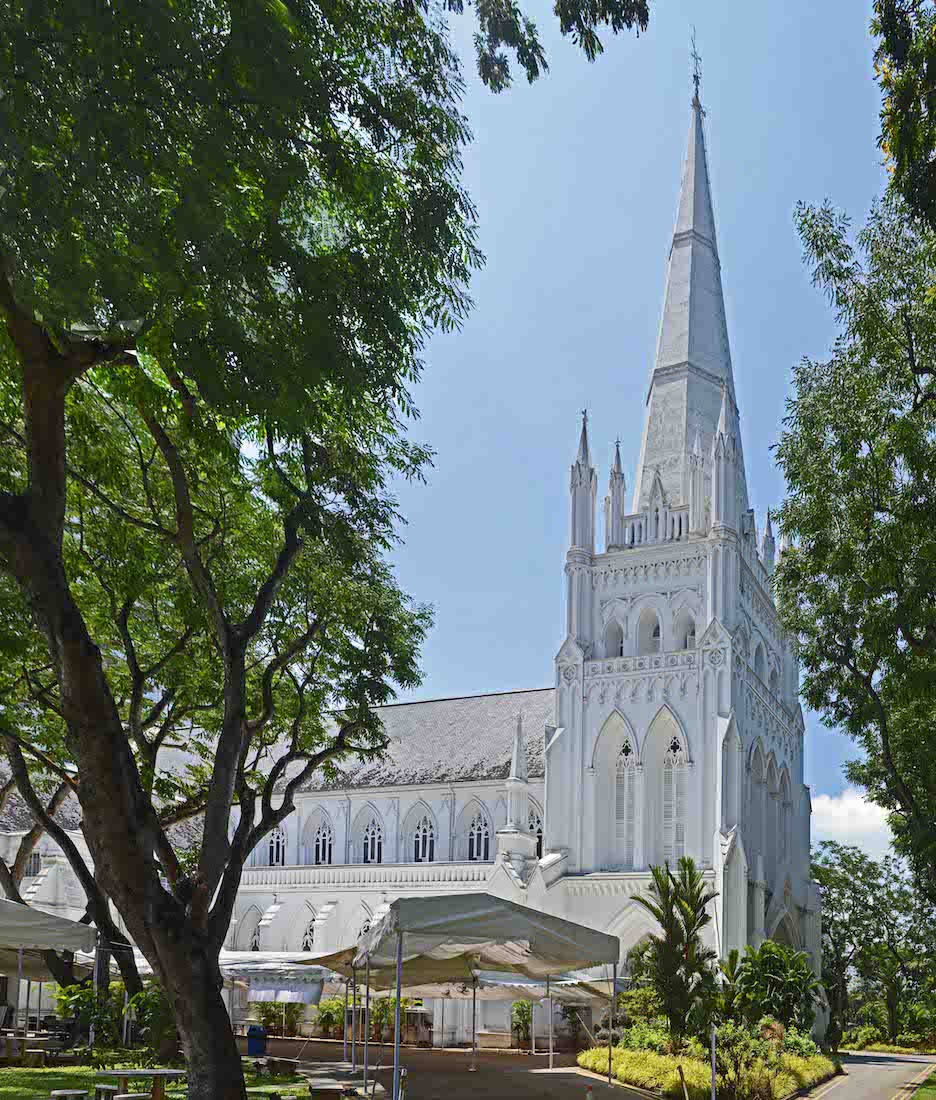
As usual we begin our exploration of this Cathedral by walking around the outside. The Cathedral is cruciform in shape with a large tower at the ‘foot’ of the cross. This tower is a delight. The spire rises 207 feet (63m). Housed in the spire are the Cathedral’s eight bells, the largest being equal in weight to No.8 in the peal of St. Paul's Cathedral, London. Given in memory of Captain J.S.M. Fraser, H.E.I.C.S., they were cast by Taylor of Loughborough.
3. THE NORTH TRANSEPT
The present Cathedral was designed by Ronald MacPherson. The Church was consecrated as the Cathedral of the Singapore Diocese in 1870. It has many good qualities and makes a prominent contribution to the Singapore skyline. This is the third cathedral built on this site, and was built by Indian convicts. It is constructed in a Neo-Gothic architectural style. Each of the transepts has small towers, or extended pinnacles, at the corners.
4. FACE OF NORTH TRANSEPT
The transepts of St Andrew’s are unusually long. They are also unusual in that they do not directly connect with the main body of the Cathedral. They are joined, but are also separate in that they do not form part of the worship space of the Cathedral. For example, the North Transept Hall contains the Graham White Library, completed in 1952. The 27,000 names of those Asians and Europeans who gave their lives in war are recorded in the Book of Remembrance kept here.
5. SANCTUARY FROM THE NORTH
This view of the Cathedral is seen from the Visitors’ Welcome Centre. Unfortunately, we visited on a public holiday, and the Centre was closed. There is a small outdoor amphitheatre near here too. We notice the small side addition to the sanctuary, with a doorway flanked by pinnacles.
6. EAST VIEW
The Cathedral is imposing from this angle with its three large stained glass windows to the sanctuary. The dimensions of the Cathedral are: Outside: 68.58m long, 35.5m wide; Inside: 55.16m long, 16.85m wide.
7. SOUTH TRANSEPT
We continue our circuit. Apparently the site occupied by the Cathedral was expressly reserved in 1823 for a church by Sir Stamford Raffles, the founder of Singapore. At that time, the few members of the Church of England were ministered to by the chaplains of the East India Company ships or by missionaries of other denominations. The first Anglican priest appointed to Singapore was the Revd Robert Burn who arrived in 1826.
8. SOUTH TRANSEPT PINNACLE
The Gothic pinnacles were an integral part of Gothic construction. This tower is more of a decoration, but nevertheless gives strong support to the transept. The ‘Gothic’ patterns on the pinnacles cleverly combine to give stylized St Andrew diagonal crosses. (There is, in fact, a St Andrew’s Cross spider, so named because of the blue-white cross in its web.)
9. CROSSES TO THE SOUTH
The Cathedral building was designed by Colonel Ronald MacPherson of the Madras Army. His memorial cross is the larger cross standing in the South lawn. The smaller cross is in memory of Graham White, Archdeacon of Singapore 1921 – 1945.
10. SOUTH VIEW
While the Cathedral setting makes for some delightful framed views, it is very hard to get an overall photo, except from above! This view is from the South. It was not until 1834 that the foundation stone of the first Anglican Church was laid on the site of the present building. This church was completed in 1837 but had a short and unfortunate history. Twice struck by lightning it was condemned as unsafe and finally closed in 1852.
11. WEST TOWER
We have now returned to the West tower. After installation of the bells, it was discovered that the foundation of the tower would not stand the strain of ringing. The bells were then permanently fixed, their clappers tied, and they were struck with hammers instead, so that they still ‘chimed’. Bells have caused structural problems in many cathedrals and churches.
13. FONT AND WEST DOORS
Entering the Cathedral and looking back, we notice the windows above the doors, and the baptismal font. The baptismal font is often placed in this position. It symbolizes the place of baptism as the means of entering the church before proceeding to the sanctuary – a picture of the Christian pilgrimage.
14. THE FOUR EVANGELISTS
These four windows illustrate the Four Evangelists, together with their traditional symbols. Each Evangelist is named in the window. From left to right we have: Matthew (symbol an angel), Mark (a lion), Luke (an ox), and John (an eagle). The eagle is the hardest to see: I think it is at the apex, with feathers down the side(s). Each symbol represents a key aspect of the Evangelist’s message: for example, the ox speaks of sacrifice.
15. FONT
The marble font has no obvious markings. It has a wooden cover with an inscribed cross and a central ring. Christians believe that baptism, with its symbolism of washing, is an indication of commitment to Christ, or entry into the Church.
16. THE FOYER LOOKING SOUTH
If we turn to the right as we enter the West doors, we gain entry to the South side of the Cathedral. We also find a number of plaques on the columns. The walls of many cathedrals and churches are lined with plaques in memory of those who have made an important contribution to the life of the congregation. These tend to be of local or historical interest.
17. CATHEDRAL PLAQUE
Of special interest here is the bottom plaque presented by the ‘Preservation of Monuments’ Board. It reads: St Andrew’s Cathedral •• Gazetted as a monument on 28 June 1973 •• The original church was designed and built by G D Coleman in 1834 – 1837. The present Cathedral was built in the English Gothic style, between 1856 and 1864 using Indian convict labour. In 1863 the tower with a spire was completed.
18. THE FOYER LOOKING NORTH
Looking left as we enter the West door, we encounter some more practical items: a Visitors’ Book, a container of hand sanitizer, and unusually a set of plastic sheaths fror wet umbrellas – a reminder of Singapore’s tropical climate!
19. BRASS PLATE
Also on the North side of the foyer is this historic brass plate which reads: To the Glory of God, the peal of bells in this Cathedral Church of St Andrew was dedicated in memory of John Small Henry Fraser, Captain H:E:I:C:S by his heirs William Henry McLeod Read K:V:N:L, C:M:G, Amelia Sophia Saunders, Arthur Frederic Clarke, Lucy Julia Beaumont, Denison Leslie Clarke, Anna McLeod Luttman Johnson on the Seventieth Anniversary of the Foundation of the Settlement 6th February 1889.
20. MORE PLAQUES
The plaques give interesting insights into past times, and the people who lived then. Here John Monkton Hay worked in the Bengal Civil Service; Rev William Henry Gomes gave his life in missionary service and translation work; William Henry McLeod Read gave his life to the building up of Singapore, and was obviously a much admired worker.


